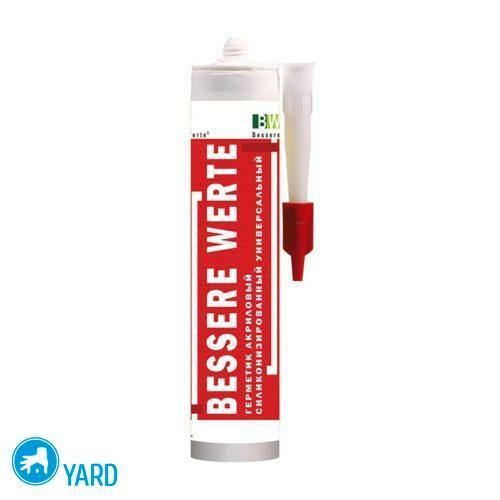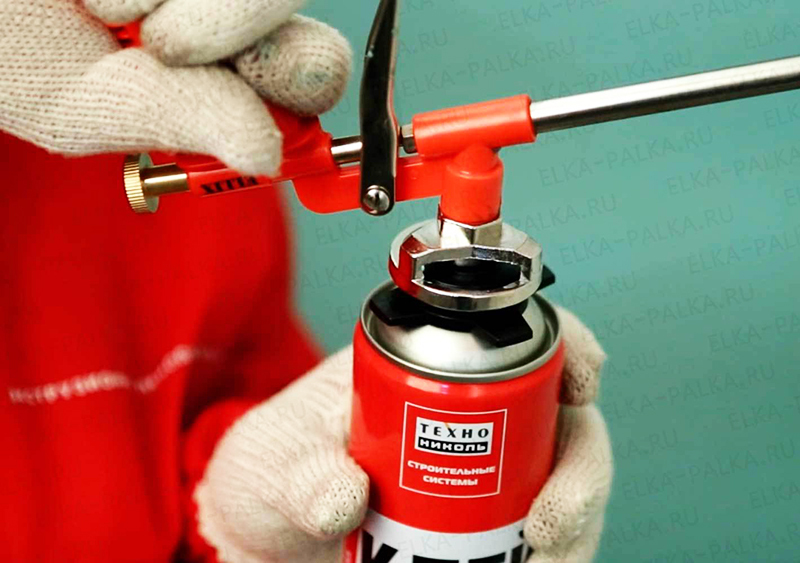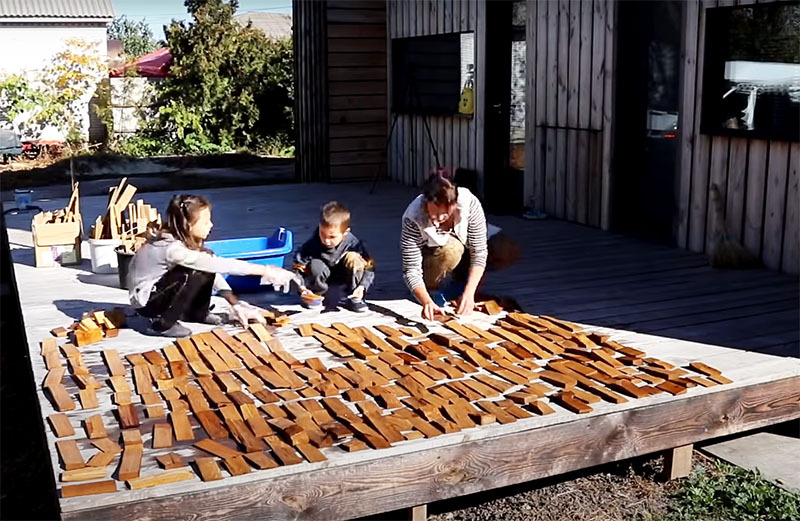
- What is a silicone sealant?
- Removal of sealant from surfaces
- Useful tips for removing sealant from various surfaces
- How to dissolve silicone on clothes?
- Than to dissolve hermetic on hands?
In this article, we'll talk about how to dissolve the silicone sealant. This topic is quite urgent, because often, wanting to save money, we are making repairs on our own. Subsequently, you can regret the adoption of such a decision, because in inept and unaccustomed to such a job, everything goes awry, and ends with stained building materials, furniture, dirty clothes and body. In addition, several years after the repair, it often becomes necessary to remove the old sealant, since it can break down, leak moisture and lose its thermal insulation properties.
to the contents ↑What is a silicone sealant?
Silicone sealant is a tool for coating joints and seams. It protects these vulnerabilities from moisture and increases the thermal insulation properties of the walls and floors. All varieties of such glue are made on the basis of silicone rubber with the addition of special components.
In consistency, it is a mastic which, when applied, becomes harder and withers out after a short time. Most often such a tool is used in bathrooms, ventilation systems, aquariums. It does not in any way spoil the appearance of the double-glazed windows, tiles or flooring, as it is absolutely transparent.

Removing sealant from
Surfaces Frozen silicone sealant is almost impossible to remove. The surface, on which it is applied, together with the glue become a single whole. Therefore, if you have a need to dissolve the silicone, then this process should not be delayed, we must start working immediately.
Important! The sealant dries very quickly. The time that will be required for this depends on the thickness of the application and the type of surface. The average drying speed is approximately 2 mm of the layer thickness per day. But it also happens that in just 20 minutes the sealant clings to the surface tightly .
Special solvent of silicone sealant
In building shops it is possible to get a special product - a solvent of silicone or sealant. It can be in the form of a spray, paste or liquid. The most popular products are on sale from such brands as:
- Soudal;
- Silicon-Entferner;
- Permaloid;
- Hammerite;
- Smellex Multiclean.
Important! When choosing a solvent for silicone, be sure to consider its component composition. For acidic agents, only cleaners are suitable, for neutral ones - others.
This product removes not only silicone, but also enamel, paint, varnish and other similar substances. After applying to the problem areas of the means, the sealant is easy to clean with a wooden scraper.
Important! Before using such a silicone solvent, you should try it on a small invisible material site to make sure that it does not damage the coating.
Mechanical method for removing silicone
In these cases, the sealant is removed using a pumice stone and a sharp knife. First, a knife is used, after which the silicone residues are cleaned with a piece of pumice stone.
Important! The knife must be thin and very sharp. Choose such that it has a sharp tip - this will help remove the sealant from small cracks.
When can I remove silicone mechanically?
A similar method is advisable to use only in the following cases:
- When there is no risk of scratches on the surface.
Important! To clean the tile in this way is strictly forbidden, since damage to its outer layer can not be avoided.
- When it is possible to restore the outer layer of the surface without any problems.
- Removal of sealant from a site that is hidden or not conspicuous.
- When the appearance of the surface does not matter much.
- If the use of chemicals causes damage to the surface material.
The process of mechanical removal:
- First, large build-ups of dried silicone are cleaned with the back of the knife.
- The smaller ones are removed with the sharp side of the blade of the knife.
- After that, the residues are scraped off with pumice stone or hard eraser.
Important! The probability of damage to the surface of the material during this process is large enough, so it is very carefully and slowly to do the removal in order to avoid the appearance of scratches.
- As a rule, after removing the sealant, a greasy stain remains on the surface. To remove it, use a dry hard loofah or a hard side of the dishwashing sponge. If the stain does not get wiped off by simply applying a sponge, try using a glass cleaner.
Important! The mechanical method of removing the sealant is most suitable for smooth and even surfaces.
If this method does not help, then it is used in combination with chemical or other auxiliaries.

White Spirit
This chemical acts as a solvent for the silicone sealant:
- Moisten a rag in a solvent.
- Treat a small area of the contaminated area.
Important! It is not necessary to handle all the problem areas at once, since the white spirit evaporates very quickly.
- After 20-30 seconds, the sealant will become soft and you can try to remove it quickly with a sharp knife.
- If the silicone layer is thick enough, the procedure should be repeated until all layers of sealant are completely removed.
Acetone
This product, as a silicone solvent, is more aggressive than white spirit. Therefore, first of all, focus on the compatibility of the liquid and the material that needs to be cleaned.
Important! It is absolutely forbidden to clean plastic products with acetone, as the liquid can dissolve material.
The procedure for cleaning with such a means is similar to that of cleaning with white spirit.
Important! For the safe use of acetone, treatment is best carried out in a well-ventilated place and using personal protective equipment.
Sodium salt
This product is used to remove a residual stain or a thin layer of silicone sealant.
- Make a tampon with salt made of fine fabric, gauze or a wide bandage.
- Dampen the salt pad in warm water and rub the problem area.
Useful tips for removing sealant from various surfaces
- If the substrate of the material that the sealant has been exposed to is ceramics or glass, the object should be preheated in order to more easily remove the silicone spot. As the temperature rises, the sealant melts and can be removed with a simple rag or cotton swab.
- Surplus "fresh" silicone can be removed without problems with a rag soaked in table vinegar.
- All procedures with solvents should be carried out whenever possible in as dry a place as possible. So the tool will work faster and the sealant will be easier to remove.
- If you have dirty plasterboard sheathing, then cleaning it with solvents does not make sense. The material will soften from the action of liquid on it. As on gypsum cardboard all the same the fine covering will be imposed, it will be better to simply cut a spot of silicone close to a surface of a leaf.
- If the sealant comes into contact with plastic surfaces, for example polyolefin or polyvinyl chloride, it can be removed with acids. Hydrochloric acid is quite suitable.
Important! Virtually all silicone solvents change the color tone of the painted surface and muffle the gloss of the tile. Therefore, use them on painted surfaces only in case of acute necessity.
to the contents ↑How to dissolve silicone on clothes?
If the sealant in the process of getting to you on clothes, it immediately needs to be washed in high temperature water. Soft, not yet solidified silicone is washed from the tissues quite easily.
If the glue has dried out, then you have to sweat to get rid of it.
Method No. 1
Work clothes can be treated with any silicone solvent. Apply it to the soiled area and leave it for 30-60 minutes. Then wash your clothes as usual.
Method number 2
Soak a cotton swab in a solvent and apply to the sealant stain. After that, iron the product in a problem place with an iron through several layers of paper.
Method # 3
Chemicals can spoil colored clothing. In this case, you can try mechanical cleaning:
- Secure the fabric in a stretched form on a flat surface.
- Gently remove the silicone from your clothes with a scraper or brushed metal nap.
- Wipe the remaining trail with gasoline, acetic essence, alcohol or mineral spirits.
- After this, immediately soak clothes and wash in a washing machine.
How to dissolve sealant on hands?
As in the case of clothes and objects, it is easiest to remove the silicone on the skin until it has completely withered. To do this, you can use one of the following methods:
- Rub your hands with a plastic bag. Silicone should adhere to polyethylene. After that, just wash your hands with soap.
- Dampen a rag in kerosene and rub the soiled areas of the skin. Be sure to wash your hands thoroughly with soap after such treatment.
- Prepare a solution of vinegar and water, mixing the components in equal proportions. Use a hand-washing aid. After contact with acetic water, cleanse the skin with clean water and soap.
- Fresh sealant can be removed from the skin with pumice. To do this, unzip the skin by placing your hands in hot water for a couple of minutes. After that, lather it well and gently rub it with pumice stone.
- Acetone and gasoline also act as a solvent sealant. To remove silicone rub the dirty areas with cotton wool soaked in one of the liquids.
Important! To prevent such problems with the skin, it is necessary to work with silicone sealant in gloves. If you are uncomfortable with gloves for some reason, you can spread an abundant amount of dry hands with soap and wait for them to dry. A layer of soap will create some protective film on the skin and will not allow silicone to be absorbed into the pores.
When doing repairs, always immediately remove the occasional sealant stains on the surfaces of the floor or wall covering. If the stain has withered, do not despair. One of the proposed methods, for sure, will help restore the surface to an even and clean appearance.


